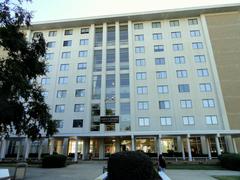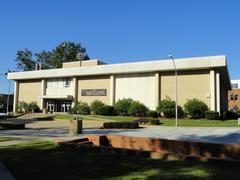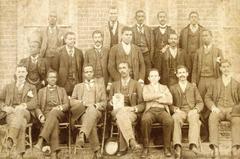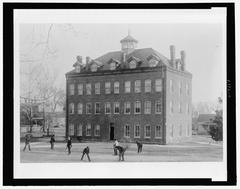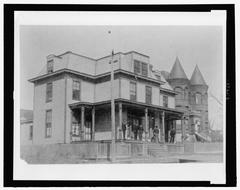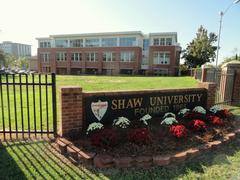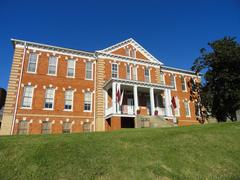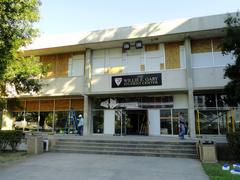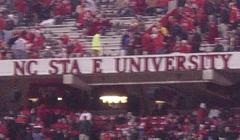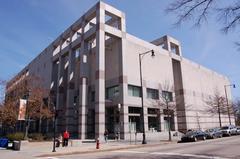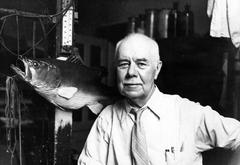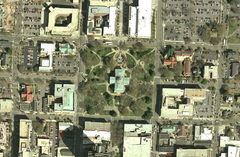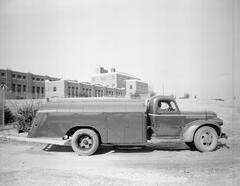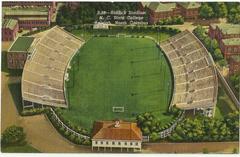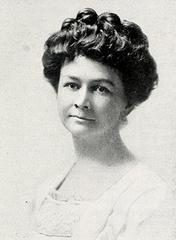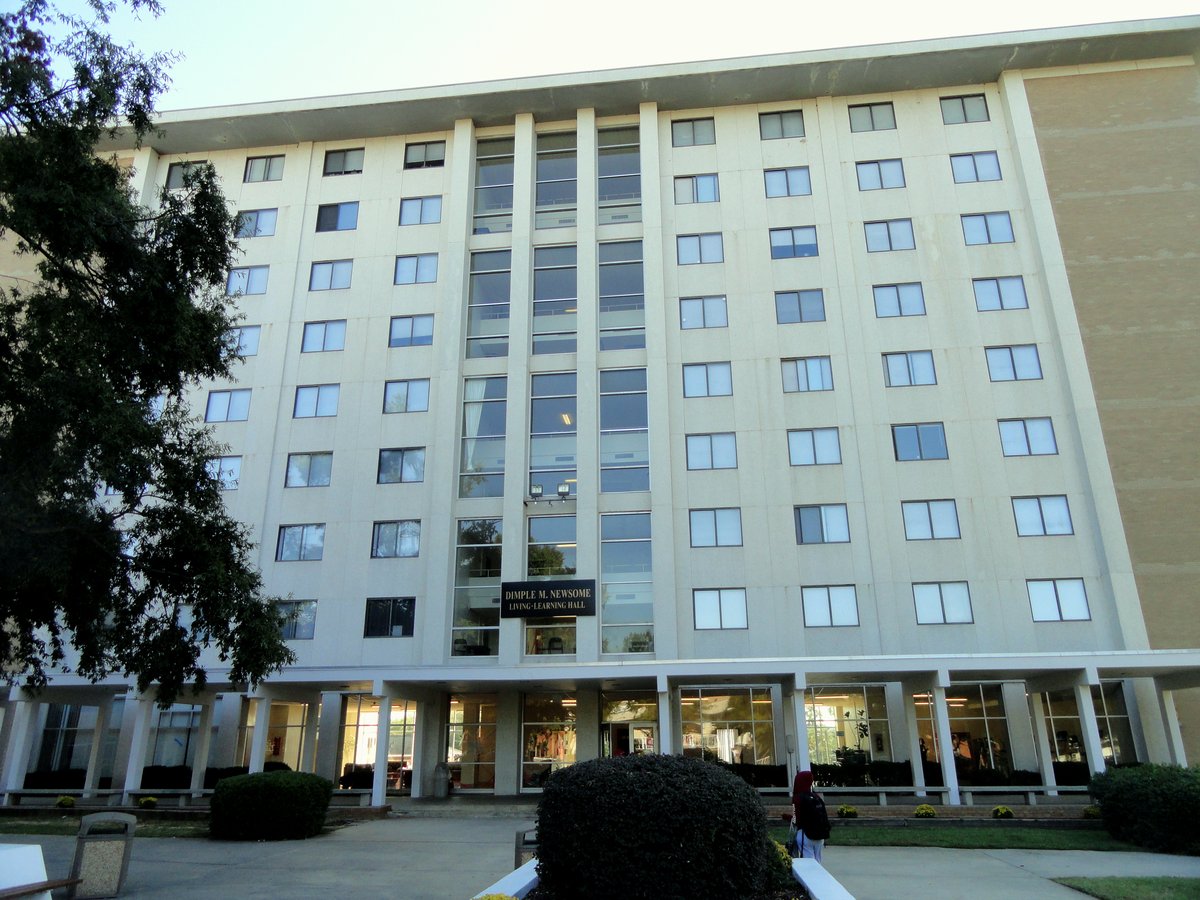
Shaw University Visiting Hours, Tickets, and Historical Sites in Raleigh
Date: 14/06/2025
Introduction: Shaw University’s Legacy in Raleigh
Shaw University, located in Raleigh, North Carolina, is a cornerstone in American educational and civil rights history. Established in 1865 as the first historically Black college in the South, Shaw has pioneered academic achievement and social progress for African Americans. Distinguished by milestones such as founding the nation’s earliest four-year medical school for Black students and creating the first women’s dormitory at an HBCU, Shaw’s campus is home to significant historic architecture—including Estey Hall and the Leonard Medical School Building. As the birthplace of the Student Nonviolent Coordinating Committee (SNCC), Shaw played a vital role in the Civil Rights Movement, nurturing leaders who championed social justice nationwide. This comprehensive guide provides essential information on visiting Shaw University: hours, tours, accessibility, nearby attractions, and travel tips to help you experience the institution’s enduring legacy. For more details, see BlackPast.org, Visit Raleigh, and the official Shaw University Campus Visit page.
Table of Contents
- Discover Shaw University: History and Impact
- Academic Programs and Student Life
- Visitor Information: Hours, Tickets, and Tours
- Accessibility and Travel Tips
- Nearby Attractions and Dining
- Notable Alumni and Legacy
- Campus and Architectural Highlights
- Preservation and Future Developments
- Visitor FAQs
- Plan Your Visit and Stay Connected
- References
Discover Shaw University: History and Impact
Founding and Early Development (1865–1900)
Founded as the Raleigh Institute in December 1865 by Rev. Henry Martin Tupper and the American Baptist Home Mission Society, Shaw University was created to address the educational needs of newly emancipated African Americans (BlackPast.org; Raleigh Today). Renamed Shaw Collegiate Institute in 1870, and eventually Shaw University in 1875, the institution became a beacon for education in the post-Civil War South (Zippia).
A landmark achievement was the construction of Estey Hall in 1873, the first building in the U.S. dedicated exclusively to the higher education of Black women (BlackPast.org). Shaw awarded its first baccalaureate degree in 1878, setting an enduring standard for Black higher education.
Academic Innovations
Shaw University established the South’s first four-year medical school for Black physicians—Leonard Medical School—in 1881 (Zippia). Over 400 Black doctors graduated before the school’s closure in 1918 (BlackPast.org). The university was also among the first HBCUs to admit women and attain an “A” rating from North Carolina’s Department of Public Instruction (Raleigh Today).
Civil Rights Leadership
In April 1960, Shaw hosted the conference that led to the founding of the Student Nonviolent Coordinating Committee (SNCC), organized by alumna Ella Baker (BlackPast.org; Zippia). Shaw’s campus served as an incubator for civil rights activism, producing leaders and supporting pivotal movements such as sit-ins and voter registration drives.
Modernization and Community Impact
Shaw continued to innovate, founding the first Black college-operated radio station in 1968 and leading research that helped World War II Black veterans receive the Medal of Honor (Zippia; Raleigh Today). Despite challenges—including a tornado in 2011—the university’s contributions to Raleigh’s economy and culture remain substantial.
Academic Programs and Student Life
Shaw offers over 30 degree programs—ranging from athletic training and social work to divinity and teacher education (BlackPast.org). The College of Professional and Adult Education (CAPE) supports non-traditional learners. Shaw’s student body is diverse and predominantly female, with a 15:1 student-to-faculty ratio.
Athletic teams, the Shaw Bears, achieved national recognition in 2012 when the Lady Bears basketball team won the NCAA Division II title (Raleigh Today).
Visitor Information: Hours, Tickets, and Tours
Campus Hours:
- Monday–Friday: 9:00 AM – 5:00 PM
- Saturday: 10:00 AM – 4:00 PM
- Sunday: Closed
Admission to the campus is free. Guided tours are available by appointment through the admissions office or online. Special events may require tickets or prior registration.
Self-guided walking tours are accessible via the City of Raleigh, featuring Shaw as a featured stop (Raleigh NC Gov).
Accessibility and Travel Tips
The campus is wheelchair accessible, with ramps and elevators in major buildings. Free parking is available for visitors, and Shaw is easily reached via Raleigh’s public transportation. Comfortable footwear is recommended, as the campus and historic Third Ward district are best explored on foot.
Nearby Attractions and Dining
Shaw’s downtown location provides quick access to:
- North Carolina Museum of History
- Raleigh City Market
- Historic Oakwood neighborhood
- Pope House Museum
- Moore Square and Nash Square
Dining options near campus include the Bear’s Den Game Room and Grill, Cyber Café, and local spots like Big Ed’s City Market (ThisIsRaleigh).
Notable Alumni and Lasting Legacy
Shaw’s alumni include:
- Ella Baker: Civil rights leader and SNCC co-founder
- Angie Brooks: Former President, U.N. General Assembly
- Edward A. Johnson: First Black member, NY State Legislature
- James “Bonecrusher” Smith: Heavyweight boxing champion
- Gladys Knight: Legendary singer (BlackPast.org; Raleigh Today)
Shaw University’s social and economic impact continues to shape Raleigh and beyond.
Campus and Architectural Highlights
Estey Hall: A National Historic Landmark
Estey Hall, built in 1873–74, is the first building in the U.S. dedicated to the higher education of Black women (Raleigh Historic). Its Italianate style and historical significance make it a must-see. The building now houses the university archives and hosts special events (College Aftermath).
Leonard Hall & Leonard Medical Building
Leonard Hall, completed in 1891, is known for its Romanesque design and historic role as a women’s dormitory and music department (College Aftermath). The adjacent Leonard Medical Building was home to the South’s first four-year medical school for Black students (Visit Raleigh).
Tupper Memorial Baptist Church
Dating to 1912, this church is closely tied to Shaw’s founding and mission, offering a space for worship and community events (Raleigh Historic).
Willie E. Gary Student Center
A modern student hub with event spaces, the Gary Center symbolizes Shaw’s ongoing evolution (College Aftermath).
Memorial Garden and Bell Tower
The Memorial Garden, home to the tombs of Shaw’s founder and his wife, and the campus bell tower, offer peaceful spots for reflection (Wikipedia).
Libraries and Learning Centers
Three libraries provide extensive resources on African American history and theology (Wikipedia).
Preservation and Future Developments
Shaw University is actively restoring and preserving its historic buildings, ensuring that future generations can engage with its legacy (College Aftermath).
Visitor FAQs
Q: What are Shaw University’s visiting hours?
A: Monday–Friday: 9:00 AM–5:00 PM; Saturday: 10:00 AM–4:00 PM; closed Sunday.
Q: Is there an admission fee?
A: No. Campus visits are free. Some special events may require tickets.
Q: Are guided tours available?
A: Yes. Book through the admissions office or online.
Q: Is the campus accessible?
A: Yes. Ramps, elevators, and accessible restrooms are available.
Q: Where can I park?
A: Limited visitor parking is on campus. Public garages and street parking are nearby (ThisIsRaleigh).
Q: Are self-guided tours available?
A: Yes. Download maps and audio guides from the City of Raleigh (Raleigh NC Gov).
Plan Your Visit and Stay Connected
Visit Shaw University’s website for the latest on visiting hours, tours, and events. Explore self-guided walking tours via City of Raleigh resources. For enhanced experiences, use the Audiala app for interactive maps and audio tours. Follow Shaw University and Visit Raleigh on social media for updates.
Image: Estey Hall, the oldest building on Shaw University’s campus, showcasing beautiful Second Empire architecture.
Image: Detailed campus map to help visitors navigate Shaw University and nearby Raleigh historical sites.
Note: Images are for illustrative purposes. See the official Shaw University website for more visuals and virtual tours.
Summary: Why Visit Shaw University?
Shaw University offers a rare window into African American educational history, civil rights activism, and architectural heritage. Its campus is a living monument to resilience and progress, located in Raleigh’s vibrant historic district and surrounded by key cultural attractions. Plan your visit to experience this legacy firsthand. Stay informed by visiting the official Shaw University website, using the Audiala app, and following Shaw on social media.
References
- Shaw University at BlackPast.org
- Shaw University at Raleigh Today
- Estey Hall at Raleigh Historic
- Shaw University Fun Facts at College Aftermath
- Shaw University at Visit Raleigh
- African American Heritage at Visit Raleigh
- Shaw University at Wikipedia
- City of Raleigh Self-Guided Tours
- Things to Do in Raleigh at ThisIsRaleigh
